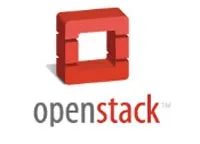6 OpenStack Distributions that Help Enterprises JumpStart Private Cloud Deployment

2013 saw OpenStack picking momentum in the enterprises. With the brands like PayPal moving to OpenStack, enterprises are closely watching this space. However, it is still not easy to deploy the plain vanilla OpenStack distribution. It requires understanding quite a few terminologies and concepts before you get it up and running. Fortunately, there are a few companies that make it easy to deal with OpenStack deployments. They provide the right set of best practices to help you jumpstart OpenStack deployments.Here is a list of 6 OpenStack distributions targeting enterprises –
1) Red Hat
Red Hat has a great track record of commercializing Linux. When the whole industry was struggling to turn the open source revolution into a commercially viable business model, Red Hat showed how to build a billion dollar business with Linux. With them embracing OpenStack, it is clear that Red Hat is trying to do to OpenStack what it did with Linux. Based on the same model of Fedora and Red Hat Enterprise Linux, OpenStack from Red Hat is available in two flavors – 1) Red Hat Distribution of OpenStack (RDO) and, 2) Red Hat Enterprise Linux OpenStack Platform. Enterprises can start with RDO, the community edition and move to the enterprise version post evaluation. With the integration of tools like Puppet and Foreman, Red Hat simplified the OpenStack deployment.
2) Mirantis
Mirantis is one of the few companies to bet on OpenStack since its early days. Based out of Mountain View, California, Mirantis calls itself the pure-play OpenStack company. They offer all things related to OpenStack including the software, training and consulting under one roof. Mirantis’ success is highly dependent on the adoption of OpenStack. They have assumed the role of OpenStack advocates and evangelists by engaging with the ecosystem at multiple levels. With the acquisition of SoftLayer, IBM has partnered with Mirantis to replace SoftLayer’s proprietary cloud management layer called CloudLayer with OpenStack. Of course, Mirantis has vested interest in making this project successful. Based on Fuel, a tool to deploy OpenStack, Mirantis pushes its own distribution of OpenStack. With investments from Dell and Intel and a pretty solid customer base that boasts the likes of Cisco, PayPal, NASA and Intel, Mirantis is a company to watch out for!
3) Rackspace
Back in 2010, Rackspace co-founded the OpenStack initiative along with NASA. It is in the race of winning customers through the distribution and professional services. Rackspace Private Cloud is based on OpenStack that can be downloaded for free. Like Mirantis, Rackspace sells training and consulting services to deploy OpenStack in production environments. Given the background and strength of Rackspace, which is primarily based on running co-location, hosting and cloud, it is finding it hard to stay on top of OpenStack contribution. With veteran open source players like Red Hat and Canonical topping the contribution and with Mirantis and HP upping the ante on consulting, Rackspace is trying its best to differentiate itself.
4) Canonical
With the success of Ubuntu on the desktops, Canonical now wants to try its hand at enterprise open source software. Ubuntu started bundling OpenStack with its server since 2011. Like its competitors, Ubuntu makes money by selling services and support. Based on a tool named Landscape, Canonical wants to simplify OpenStack deployment. According to Canonical, “Landscape provides a single, easy-to-use, browser-based control panel, through which you can manage your machines from anywhere. With a fully scriptable API, you can integrate it with your current Linux management tools, extending their capabilities and giving you the power to do more with fewer resources”. This sounds similar to Red Hat’s Foreman and Mirantis’ Fuel. You can download Canonical Ubuntu from http://www.ubuntu.com/cloud/tools/openstack.
5) Cloudscaling
Founded by Randy Bias, cloud computing thought leader, Cloudscaling is an early mover in the OpenStack world. Dubbed as Open Cloud System (OCS), Cloudscaling has customized OpenStack to meet the enterprise needs. It claims that OCS is based on the proven scalability architecture that powers AWS and Google Cloud Platform. Cloudscaling was in news in 2012 when it announced API compatibility between Google Compute Engine and OpenStack. With customers like Ubisoft and Internap, Cloudscaling is expected to drive OpenStack adoption among enterprises.
6) Piston OpenStack
Founded by the executive team from Zimbra, NASA and Rackspace, Piston Cloud Computing squarely focuses on enterprises. Piston OpenStack includes a number of proprietary technologies that automate the configuration, deployment and management of OpenStack, and improve the efficiency of the hypervisor. Piston OpenStack replaces the default components of OpenStack with enhancements based on Ceph and Moxie HA. Piston claims that their distribution makes it easy to deploy OpenStack on baremetal servers. Unlike its competitors, Piston doesn’t offer free OpenStack distribution.
Did I miss any other distributions? Drop a comment to let us know.







